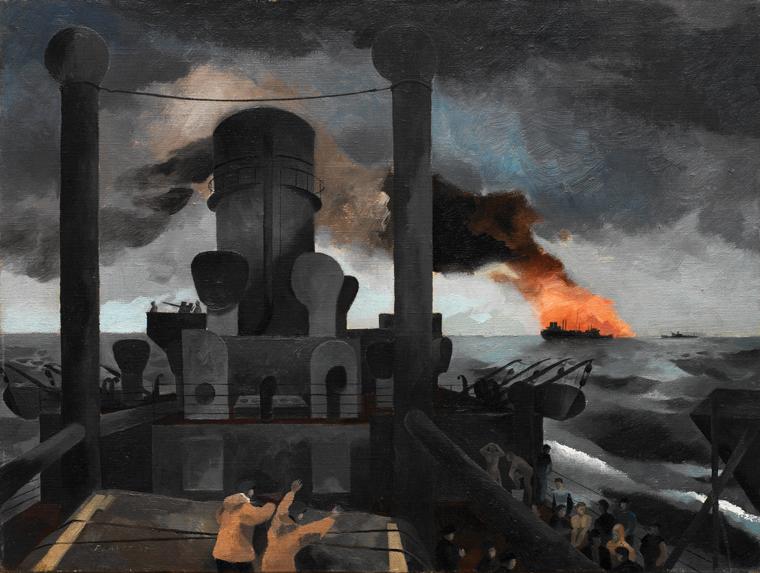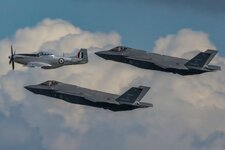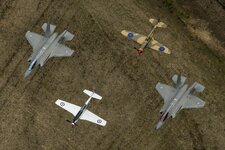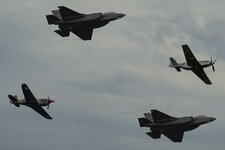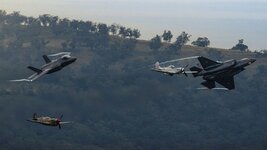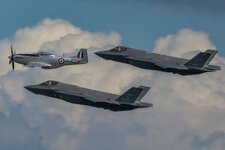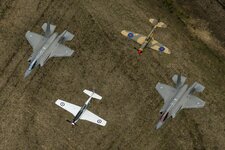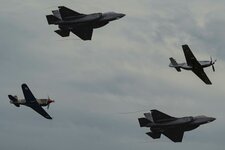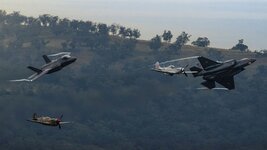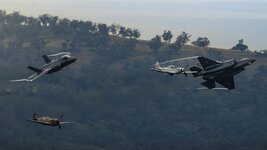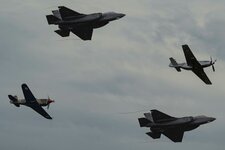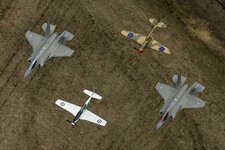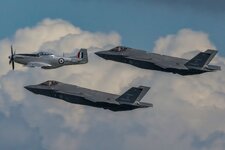Now we are into some murky waters.B-24s were used in bombing operations in the Mediterranean, flying with 178 Squadron and 10/227/462/614 Squadron.
10 and 76 Halifax squadrons sent detachments to the Med in June / July 1942. These Halifax detachments, along with a ground service unit labelled 227 squadron (see below), came together to form 462 squadron on 7 Sept 1942. This unit operated Halifax II through to March 1944 when it was renumbered 614 squadron. 614 continued to operate Halifax II through to March 1945, but from Aug 1944 began to receive Liberator VIII equipped with the AN/APS-15 radar. Then on 27 July 1945 it was renumbered again becoming 214 squadron. It moved to Palestine in Aug 1945 where it re-equipped with Lancaster I in Nov. It was renumbered again on 15 April 1946 as 37 squadron.
The 227 squadron label was in WW2 first allotted to a Beaufighter detachment on Malta which was absorbed into 272 in June 1942. Then it went to a ground service unit in Palestine meant to service the Halifax detachments sent out from Britain. In turn it was absorbed into 462 as noted above.
Confusingly a new 227 squadron had been formed on Malta on 20 Aug 1942 (some 3 weeks before 462 camee into existence) absorbing a detachment of 235 squadron Beaufighters sent out from Britain!
So 10, 76, 227 and 462 did not operate Liberators at any time.
159 formed on Liberator B.II in Jan 1942 in Britain. Its ground echelon left for the Middle East in Feb arriving in April before moving on to India in May after a spell servicing other squadron's aircraft. The aircraft were flown out to Palestine in July and they were used in raids from both Palestine & Malta against targets in Greece, Italy & North Africa from 1 Aug to 30 Sept 1942 when they moved to India. During this time their aircraft were serviced by personnel who went on to form 454 squadron.
160 squadron history is even more convoluted. Formed in Britain on 16 Jan 1942, its groundcrews left for India in mid-Feb 1942. On 8 June 1942 the aircraft began the journey to Palestine where they were held up as a ME bomber Force. This ME unit was relabelled 160 (Middle east Det) with retrospective effect from 16 Sept 1942 and was absorbed into 178 squadron on 15 Jan 1943 when it formed at Shandur in Egypt. Meanwhile a new 160 squadron formed in the UK in Oct 1942 and went to India in Jan 1943 having trained in the general recce role alongside 86 squadron of Coastal Command.
During 1942 there were quite a number of Britain based units that sent detachments to the Middle East where the aircraft were serviced by personnel from other squadrons. In some cases entire squadrons of aircraft were held up in the Middle East in time of crisis while their ground crews took the boat round the Cape to India where they would link up with the surviving aircrew.
178 was a new Liberator unit formed in Egypt on 15 Jan 1943 absorbing the ME Det of 160. It continued to operate Liberators through to Nov 1945 (plus some Halifax II May-Sept 1943). Other Med Liberator squadrons were 37 (from Oct 1944 to March 1946), 40 (from March 1945 to jan 1946), 70 (Jan 1945 to March 1946), 104 (Feb 1945 to Nov 1945).

